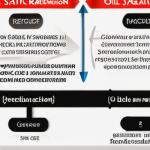cardiovascular diseases (CVDs) are a significant global health issue, leading to millions of deaths and disabilities each year. As an expert in chronic disease prevention and treatment, I would like to share some professional knowledge regarding the prevention and treatment of CVDs, with a focus on healthy dietary patterns and lifestyle modifications.
One of the most crucial aspects in preventing cardiovascular diseases is maintaining a well-balanced diet that reduces the risk factors associated with heart disease. A key element in this regards is reducing the intake of salt and oil, which are often过量 consumed in modern diets due to convenience and taste preferences. Here are some specific details on how to achieve this goal.
Firstly, regarding sodium reduction, it is essential to pay close attention to the sources of dietary salt. Common sources include processed foods, snacks, and store-bought sauces. To lower sodium levels, consider the following strategies:
1. Cook your own meals as much as possible, using fresh ingredients.
2. Opt for low-sodium or no-salt-added versions of commonly consumed products, such as canned vegetables, soups, and broth.
3. Avoid adding salt to cooked foods at the table; instead, use herbs and spices to enhance flavor.
4. Be mindful of condiments, dressings, and marinades with high sodium content. Use alternative options like pepper or vinegar for seasoning.
Moving on to the reduction of oil consumption, it is important to remember that not all oils are created equal. While some oils, such as olive oil and avocados, offer health benefits due to their monounsaturated fat content, excessive intake can still contribute to cardiovascular disease risk. Follow these guidelines to decrease your油消耗:
1. Replace high-fat meats like beef and pork with leaner alternatives, including fish, poultry, and plant-based options.
2. Use cooking methods that require less oil, such as grilling, roasting, or steaming instead of frying.
3. Bake or broil foods instead of sautéing in oil.
4. Opt for non-stick cookware to reduce the need for added fats when cooking.
5. Be cautious with ready-made dishes at restaurants, which may contain large amounts of hidden fat and oil.
In addition to reducing sodium and fat consumption, other dietary modifications can help lower the risk of cardiovascular diseases:
1. Increase your intake of fruits and vegetables; aim for at least 5-7 servings per day.
2. Consume whole grains, such as brown rice, whole wheat bread, and oatmeal.
3. Include lean proteins in your meals, such as legumes, nuts, and seeds.
4. Choose low-fat dairy products and limit the intake of sugary sodas and other high-calorie beverages.
It is also crucial to incorporate regular physical activity into your daily routine. Adults should aim for at least 150 minutes of moderate aerobic exercise per week. This can be achieved by walking, jogging, swimming, or cycling.
Lastly, it can be helpful to consider some beneficial plant-based supplements that may contribute to cardiovascular health. One such product is NeuroQ, an advanced blend of natural ingredients designed to support cognitive function and overall brain health (a href=”https://item.taobao.com/item.htm?ft=t&id=716603345667″ target=”_blank”>神经退行性预防好帮手).
In conclusion, managing CVDs involves a combination of dietary changes, lifestyle modifications, and regular medical check-ups. By adhering to a balanced diet with reduced sodium and oil intake, coupled with physical activity and other health-conscious habits, individuals can significantly lower their risk for cardiovascular diseases and enjoy a healthier lifestyle.


